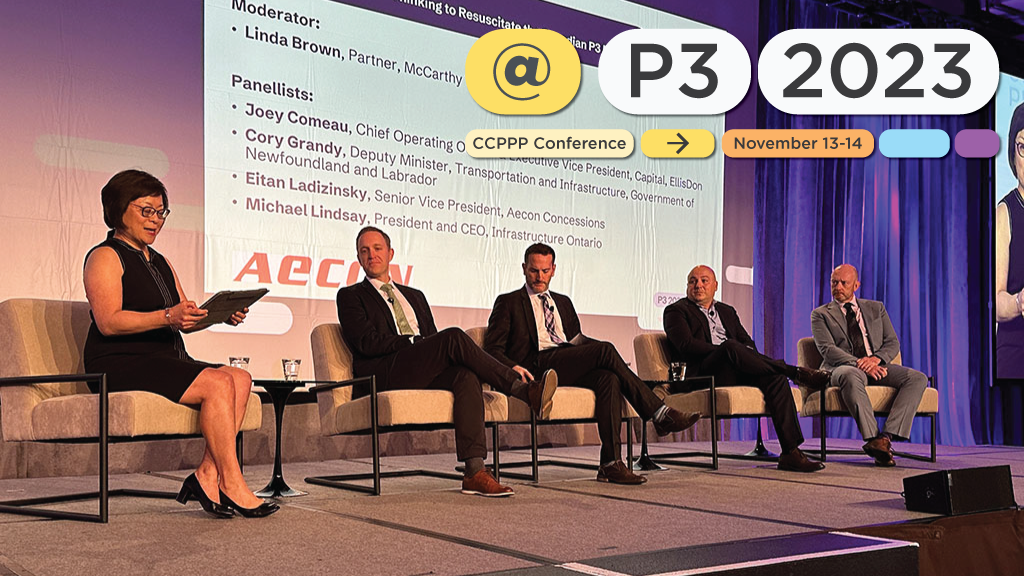The P3 model faces challenges in a changed world, but a panel of experts think it will adapt to thrive under new conditions.
A group of experts pondered the present and future of the P3 model at the Canadian Council for Public-Private Partnerships annual conference at a session titled Bridging the Divide: New Thinking to Resuscitate the Canadian P3 Market.
The panel was moderated by McCarthy Tétrault LLP partner Linda Brown with EllisDon executive vice-president and COO Joey Comeau, Aecon Concessions senior vice-president Eitan Ladizinsky, Infrastructure Ontario president and CEO Michael Lindsay and Newfoundland and Labrador Deputy Minister of Transportation and Infrastructure Cory Grandy each lending their expertise.
“We have been talking to the market for the past several years about the right delivery model for the right project, based on the characteristics of that project, from size to risk to geographic location,” Lindsay said. “Especially on the social side for large hospital projects, there’s a growing awareness that you need early partner constructor involvement in the initial development and design…in order to try not only to make real choices about scope and affordability but also to identify up front some of the challenges you might run into as you construct the project, provide contingency for those risks but also hopefully address them so there’s much less risk when we get into the delivery phase.”
Comeau pointed to the pre- and post-COVID eras as fundamentally different in terms of risk and overall conditions for building.
“The efficiency you get out of labour is different post-COVID,” Comeau said. “You could be waiting for a part from Eastern Europe that’s being impacted because of global affairs issues.”
He added conditions sometimes require strengthened partnerships and co-operation in the face of unforeseen circumstances.
“There are just some things you cannot control. A small portion can have a big impact,” he said.
“When looking at these challenges, we don’t all lawyer up and get concerned about our individual lability, we solve the problem in the fairest way possible. That’s how you get the next job and the one after that.”
Ladizinsky echoed the panel’s concerns and said, “We’re in a totally different world today.
“The ‘golden age’ of P3s was a global economy and light borders. Following COVID and wars all over the world, we’re looking at a converging market and people looking after their own problems,” he said.
“We’re dealing with two issues,” Ladizinsky added. “Dealing with consequences of having a fine-tuned model that now doesn’t necessarily work with reality and figuring out the proper thing to do.
“It is on us still to figure out the elements we need to fix.”
Grady noted the P3 space has moved to adapt to a new market reality.
“For years it was about competition and the lowest price and we’ve moved away from that to the best value, but there’s an expectation in the public that it’s still competitive, which is a tough divide to bridge,” he said.
Lindsay noted even while the pandemic was at its peak the province of Ontario brought 29 projects to substantial completion with 24 more being built, but agreed different crisis points such as war and strife across the globe, disrupted supply chains and near-unprecedented inflation have raised challenges for government counterparts in areas that used to be almost effortless.
“How are they going to get enough concrete or rebar? These are things that are new challenges post-pandemic. I bet on us and our ability to stay in close conversation with the market about how to effectively navigate those challenges,” he said.
Follow the author on Twitter @JOCFrey



Recent Comments
comments for this post are closed